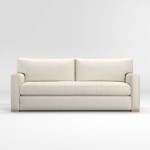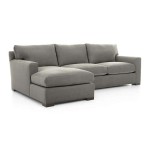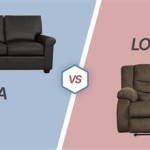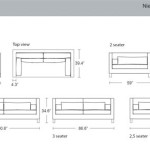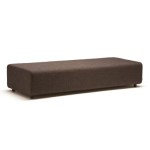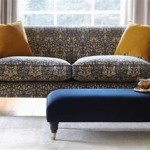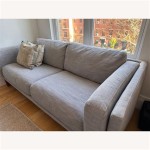Art Nouveau Sofa: A Synthesis of Nature and Luxury
The Art Nouveau movement, flourishing from the 1890s to the outbreak of World War I, left an indelible mark on architecture, decorative arts, and furniture design. Art Nouveau sofas, in particular, stand as testaments to the era's unique aesthetic, blending organic forms, flowing lines, and exquisite craftsmanship.
Characterized by a rejection of historical styles and an embrace of natural inspiration, Art Nouveau design frequently features motifs drawn from the plant and animal kingdoms. Think sinuous vines, delicate flowers, graceful insects, and the flowing forms of water. These natural elements were seamlessly integrated into furniture design, creating pieces that were both functional and artistic.
The structure of an Art Nouveau sofa often incorporates curved lines and asymmetrical shapes. Straight lines are largely eschewed in favor of gentle curves that mimic the growth patterns found in nature. This focus on organic forms gives Art Nouveau sofas a distinctive, almost sculptural quality.
Materials employed in crafting Art Nouveau sofas reflect the emphasis on high-quality craftsmanship and luxurious aesthetics. Wood was the primary structural material, often chosen for its rich grain and ability to be carved and shaped into intricate forms. Popular wood choices included mahogany, walnut, and oak. These woods were often stained or polished to enhance their natural beauty.
Upholstery played a vital role in the overall design of Art Nouveau sofas. Rich fabrics, such as velvet, silk, and tapestry, were frequently chosen to complement the flowing lines and organic forms of the frame. These fabrics often featured intricate patterns inspired by nature, further enhancing the overall aesthetic.
Beyond the core materials, decorative elements were crucial in establishing the distinct Art Nouveau style. Intricate carvings, often depicting floral or foliate motifs, adorned the wooden frames. Inlays of mother-of-pearl, abalone, or contrasting wood species added another layer of ornamentation. Metal accents, particularly brass or pewter, provided further embellishment, often appearing as decorative hardware or structural supports.
Regional variations existed within the Art Nouveau style, resulting in distinct characteristics in sofas produced in different countries. The French, for example, often favored elegant and refined designs, while the Belgians embraced more geometric and abstract interpretations of natural forms. The Viennese Secessionist movement, closely related to Art Nouveau, emphasized simpler lines and geometric shapes.
The influence of prominent designers significantly shaped the evolution of Art Nouveau furniture, including sofas. Emile Gallé, known for his glasswork and furniture, incorporated elaborate marquetry and intricate carvings into his designs. Louis Majorelle, a renowned French furniture maker, created pieces characterized by the use of exotic woods and intricate metalwork.
Collecting Art Nouveau sofas today requires careful consideration and research. Due to the age and relative rarity of these pieces, authenticity is a paramount concern. Examining the construction techniques, materials used, and overall design can help determine the legitimacy of a piece. Provenance, or the documented history of ownership, is also a valuable factor in assessing authenticity.
The value of an Art Nouveau sofa depends on several factors, including its condition, rarity, provenance, and the prominence of the designer. Pieces in excellent original condition, with documented history and attributed to renowned designers, command the highest prices in the market. Restoration can impact value, with expertly executed restorations generally preserving or even enhancing a piece's worth.
Caring for an Art Nouveau sofa requires an understanding of the delicate nature of these antique pieces. Regular dusting with a soft cloth is essential. Avoid placing the sofa in direct sunlight, as this can fade fabrics and damage the wood. Professional upholstery cleaning should be undertaken when necessary, using methods appropriate for antique textiles. Consulting with a furniture conservator is recommended for any significant repairs or restoration work.
Art Nouveau sofas continue to be highly sought after by collectors and design enthusiasts alike. Their enduring appeal lies in the harmonious blend of artistic expression, natural inspiration, and meticulous craftsmanship. These pieces represent a significant chapter in design history and offer a unique blend of beauty and functionality that transcends fleeting trends.
The influence of Art Nouveau continues to resonate in contemporary furniture design. While not always a direct replication, the emphasis on organic forms, flowing lines, and the integration of natural motifs can be observed in various contemporary pieces. This enduring legacy speaks to the timeless quality of the Art Nouveau aesthetic.

French 19th Century Carved Art Nouveau Settee Furniture Deco Design

Art Nouveau Style Sofas Archis

Casa Padrino Luxury Art Nouveau 3 Seater Sofa White Light Brown Noble Handmade Living Room Baroque Furniture

Art Nouveau Sofa I Love How The Material Pattern And Wooden Carved Backrest Appear To Flow Into One Another Meubelontwerp Antieke Meubels Stoelen

Art Nouveau Sofa 1890s For At Pamono

Sofá De Estilo Art Nouveau Ca1922bis Henryot Cie Branco Em Tecido Madeira

Art Nouveau Style Sofa Italy Giclee Print Com

Sofá Calia Italia Art Nouveau Modelo 3d Turbosquid 1511141

Art Nouveau Designer Sofas Group

Pin On Red

